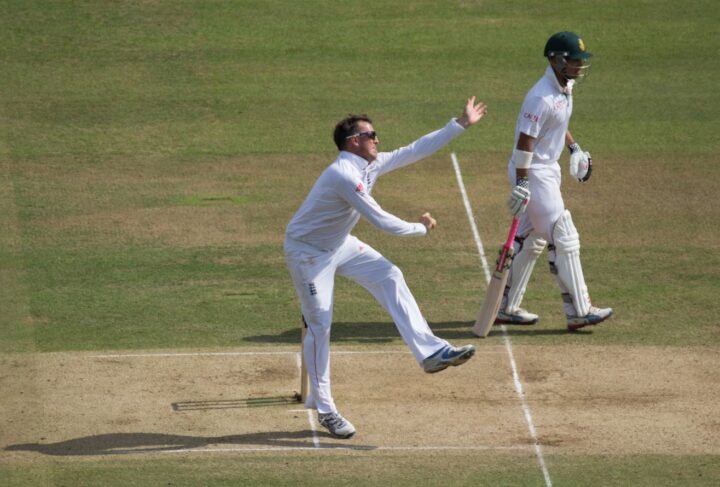Given England’s disappointing test performances over the last year there’s obviously been a lot of talk about the ECB prioritising white ball cricket. However, according to our spy down under Frazer Loveman, it’s not just England who look a better unit in limited overs cricket …
Fresh off the back of the somewhat humiliating test series defeat to South Africa, salvaged only by a morale boosting win in the pink-ball test in Adelaide from a side buoyed by young blood, Australia had to turn their attentions to a 3 match ODI series against their nearest and dearest, the Black Caps of New Zealand. Given that just 21 months ago these sides were doing battle in the World Cup final it was expected to be a spirited competition for the Chappell-Hadlee Trophy, last won by the Kiwis in February this year.
This was the first time the Kiwis would face Australia without talismanic captain and slogger Brendan McCullum, but they still brought mid-order wizard Kane Williamson along with the big hitting Martin Guptill to complement a bowling attack featuring Trent Boult, Tim Southee and Mitchell Santner. In the end, it didn’t prove enough as the Aussies won all three games in emphatic style.
In fact, all three games followed roughly the same pattern. Australia batted first in all three matches, and in each game their innings was headlined by a match-winning hundred. In the first game this came from Steve Smith, who hit a fabulous 164 whilst the rest of the top order crumbled around him. Travis Head managed to stick around for 52 to support his skipper, but Smith looked simply dominant, playing one of the finest innings I’d seen all year, looking utterly untroubled by any of the New Zealand bowlers.
The second two games saw masterclasses from the other truly world class player in the Aussie batting line-up, David Warner. You don’t need an OLED TV to see Warner’s class, and it was on full display in knocks of 119 and 156, the first ably supported by another solid 72 from Captain Smith. With competitive totals posted in all three of their innings’ with the bat, the bowlers sealed the deal, skittling the entire Kiwi line-up in all three games. The triple-headed hydra of Mitchell Starc, Josh Hazelwood and Pat Cummins was superb and meant that the closest New Zealand could get to an Aussie total was a 62 run loss in the first game.
For their part, some of New Zealand’s stars made an impression. Guptill bagged a ton in the first game and Williamson hit a typically classy 81 in the second match. Boult was the best Kiwi bowler by a distance, but they looked nowhere near matching the Aussies across a whole game.
All this begs the question, how can Australia have gone from so abject with the red ball to so destructive with its white counterpart in under a month? Firstly, it should be noted that the fast bowling attack was dangerous in the South Africa series, with Starc and Hazelwood able to translate form in the longer form into devastation in the shorter games, especially when teamed with Cummins, who has likely suffered too many injuries to be worth risking again in tests.
However, it was the batting against the Proteas which came under greater scrutiny. Steve Smith had looked good against South Africa and carried that success over, but Warner seemed to re-find the form which had abandoned him against the red ball. When those two fire, either in tandem or separately, it can catapult Australia to a solid total but the question is who can stay with them long enough when the other falters?
It strikes me that Australia’s batting form in the short game might be a bit of an illusion. Warner and Smith are just as capable of playing well in either format, and in this series the next best innings was Mitchell Marsh’s 72 off 40 balls in game 2, with the only other real contributions coming from Head, who displayed the ability to both be patient and hit out in his two fifties, but didn’t necessarily always look comfortable in doing so.
What this amounts to in the short ball format is basically the Australians’ shortcoming over five days too. If Warner and/or Smith don’t score, then this team is probably going to struggle. In recent times, Warner’s cut-and-dash style has seemed better suited to ODIs than test matches, and this masks the fact the rest of the team has very little to offer quite a lot of the time.
Interestingly it appears that Australia are now happy to keep the two sides very separate. In years gone by the form of Mitchell Marsh in this series may have put him in contention, but now even he is admitting that a recall is unlikely. The stark contrast in Marsh’s batting performances in the two different forms – averaging 23.18 against the red ball but 38.68 in ODIs – could be an indicator of why the Aussies do look less comfortable over five days. Natural hitters like Marsh are trying to play in a style that doesn’t suit them. The same might be said of some of England’s batsmen in India.
Whether this seeming disparity between red and white ball cricket is an issue that runs team-deep, or is just a product of the form of Warner and Smith, remains to be seen. The Baggy Greens are currently playing Pakistan and should expect to win both the test and ODI series on home soil. However, if an improvement comes on the basis of Warner carrying over his form from this series, as opposed to significant contributions from some of the new faces in the batting order, one wonders whether Australia are just papering over cracks.
The performances by Usman Khawaja and Peter Handscombe against Pakistan at Brisbane are undoubtedly positives, but like England the Aussies currently look more comfortable in pyjamas than they do in whites. It will be interesting to see if they fare any better in India than England did. I’m not going to hold my breath.
Frazer Loveman









Australia, England and NZ are in the same group for the CT with two going through. Gotta fancy the first two at the moment. Australia look the best ODI side in the world to me – powerful batting down the order, Starc-Hazlewood-Cummins-Faulkner as a seam attack and the possible weak link of spin in fact finds Adam Zampa as the top wicket-taker in ODIs in the world in 2016.
Australia’s only real weakness, as the 5-0 drubbing in SA showed, is a lack of cover for the front-line bowlers. However if they can get three of their best four on the field, I fancy them to win the CT.
Small point of order – it’s the Black Caps of NZ. The Black Ferns are the women’s rugby team
NZ team naming conventions are myriad and confusing admittedly – just don’t mess with the badminton players ;) (see below).
But broadly there has to be black, white or silver in the name, and “Fern” usually denotes a women’s team
Black Caps – men’s cricket
White Ferns – women’s cricket
All Blacks – men’s rugby union
Black Ferns – women’s rugby union
Kiwis – men’s rugby league
All Whites – men’s soccer
Tall Blacks/Ferns – men’s/women’s basketball
Silver Ferns – women’s netball
Black/White Sox – men’s/women’s softball
Black Jacks – men’s lawn bowls
Black Sticks – hockey
Ice Blacks/Ferns – men’s/women’s ice hockey
Wheel Blacks – men’s wheelchair rugby (murderball)
Black Cocks – men’s badminton (ahem) (OK, they changed the official name to “Silver Shuttles” but the old name has stuck)
Spotted and fixed Pete. Not sure how that one got past the clueless editor! Love the Tall Blacks name :-)
Cheers James.
In fairness the Black Ferns might have gone better than the Black Caps over in Aus – no Taylor meant “going an England” and fielding bits & pieces all-rounders in the middle order (Jimmy Neesham at 4!), plus yet again attempting to turn BJ Watling into an ODI player.
Again, this isn’t an England thing.. it’s a world cricket thing. Every single board has prioritised white ball cricket from pro level to adult amateur level to jnr level. They’ve done this for 10 years now and shock horror… you produce players who suit wham bang thank you mam players.
It really isn’t rocket science. If you want to produce technically sound players (both batting, bowling and tactically astute skippers) then you need to be playing meaningful draw cricket st all levels to provide that solid foundation in technique and mentality. If not, then quite simply you have no hope.
I’m afraid no one outside Aus is going to get the OLED joke..
I got it!
Please, please let Cook stay as captain for the Ashes – not too many Aussies want anyone else!
I have no idea why there is even a debate about the difference between white and red ball cricket. It is obvious to all. Even before the recent period when ODI’s have gone the same way as T20s in style terms it was clear that various batsmen (and bowlers) performed better in one form or the other. It is only the truly world class that can master both of the different skill sets required for tests and baseball.
Perhaps the best example from previous years is Nick Knight. A wonderful asset to England in the short form (clearly our best bat of the time) but never at home in tests.